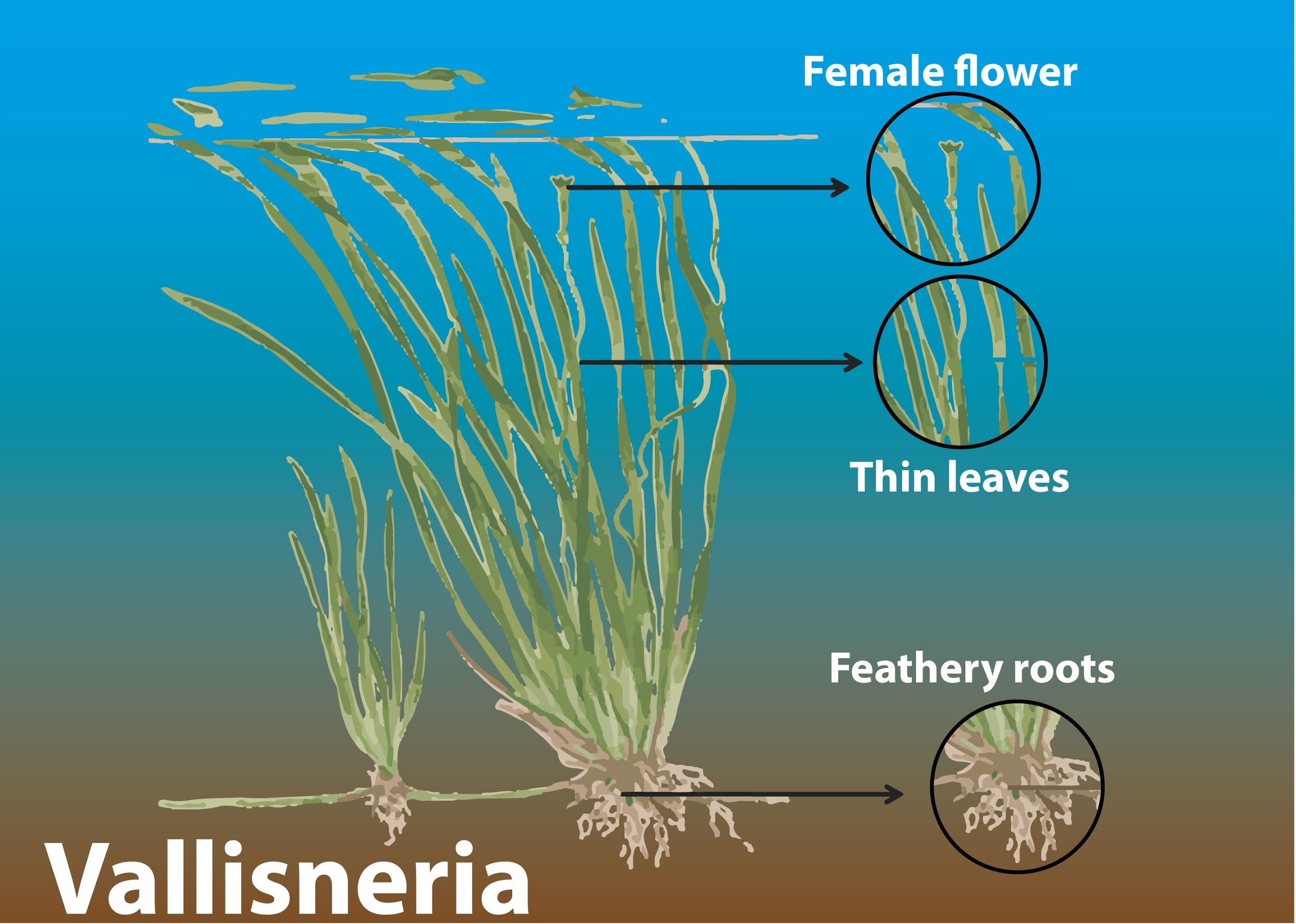
How does pollination is achieved in Vallisneria and seagrasses?
Answer
576.9k+ views
Hint: There are three biological classes of the hydrophilous plant that rely on whether their pollen is transported above, on, or under the water surface. In Vallisneria pollination is occurred by hydrophily i.e. through the water. Seagrasses are closely related to land plants, and probably evolved from land-living angiosperms (flowering plants) millions of years ago.
Complete answer:
The pollination in the Vallisneria and seagrasses is accomplished with the assistance of water. Pollination in Vallisneria is epihydrophily. It is a kind of hydrophily which happens on the outside of water. In Vallisneria, the female blossoms are submerged in the water. They arrive at the outside of water by the long tail on reaching maturity. Right now, the male blossoms are delivered onto the surface of the water. With the assistance of the water, the pollen interacts with the female flower, and the pollination is accomplished. In the case of seagrass, the female blossoms stay submerged in water. The pollen grains are delivered inside the water. The dust grains are long, string-like, and are carried with the water and arrive at the stigma and accomplish pollination.

Additional Information: In this world, there are 72 different species of seagrasses, belonging to four families. Compared to land plants, which have much higher rates of species diversity, the number is not high. Seagrasses are known as the "lungs of the ocean" since one square meter of seagrasses can produce 10 liters of oxygen per day through photosynthesis.
The closest which relates to seagrass, on land, are the monocots – grasses, palms, and lilies.
Note: Seagrasses produce the longest pollen grains on earth (up to 5mm long compared to the under 0.1mm for land plants typically).
Vallisneria spiralis is an evergreen Perennial. The characteristics of species are dioecious (individual flowers are either male or female, but only one sex is to be found on any one plant so both male and female plants should be grown if seed is required).
Complete answer:
The pollination in the Vallisneria and seagrasses is accomplished with the assistance of water. Pollination in Vallisneria is epihydrophily. It is a kind of hydrophily which happens on the outside of water. In Vallisneria, the female blossoms are submerged in the water. They arrive at the outside of water by the long tail on reaching maturity. Right now, the male blossoms are delivered onto the surface of the water. With the assistance of the water, the pollen interacts with the female flower, and the pollination is accomplished. In the case of seagrass, the female blossoms stay submerged in water. The pollen grains are delivered inside the water. The dust grains are long, string-like, and are carried with the water and arrive at the stigma and accomplish pollination.

Additional Information: In this world, there are 72 different species of seagrasses, belonging to four families. Compared to land plants, which have much higher rates of species diversity, the number is not high. Seagrasses are known as the "lungs of the ocean" since one square meter of seagrasses can produce 10 liters of oxygen per day through photosynthesis.
The closest which relates to seagrass, on land, are the monocots – grasses, palms, and lilies.
Note: Seagrasses produce the longest pollen grains on earth (up to 5mm long compared to the under 0.1mm for land plants typically).
Vallisneria spiralis is an evergreen Perennial. The characteristics of species are dioecious (individual flowers are either male or female, but only one sex is to be found on any one plant so both male and female plants should be grown if seed is required).
Recently Updated Pages
The number of solutions in x in 02pi for which sqrt class 12 maths CBSE

Write any two methods of preparation of phenol Give class 12 chemistry CBSE

Differentiate between action potential and resting class 12 biology CBSE

Two plane mirrors arranged at right angles to each class 12 physics CBSE

Which of the following molecules is are chiral A I class 12 chemistry CBSE

Name different types of neurons and give one function class 12 biology CBSE

Trending doubts
Which are the Top 10 Largest Countries of the World?

What are the major means of transport Explain each class 12 social science CBSE

Draw a labelled sketch of the human eye class 12 physics CBSE

Differentiate between insitu conservation and exsitu class 12 biology CBSE

The computer jargonwwww stands for Aworld wide web class 12 physics CBSE

State the principle of an ac generator and explain class 12 physics CBSE




